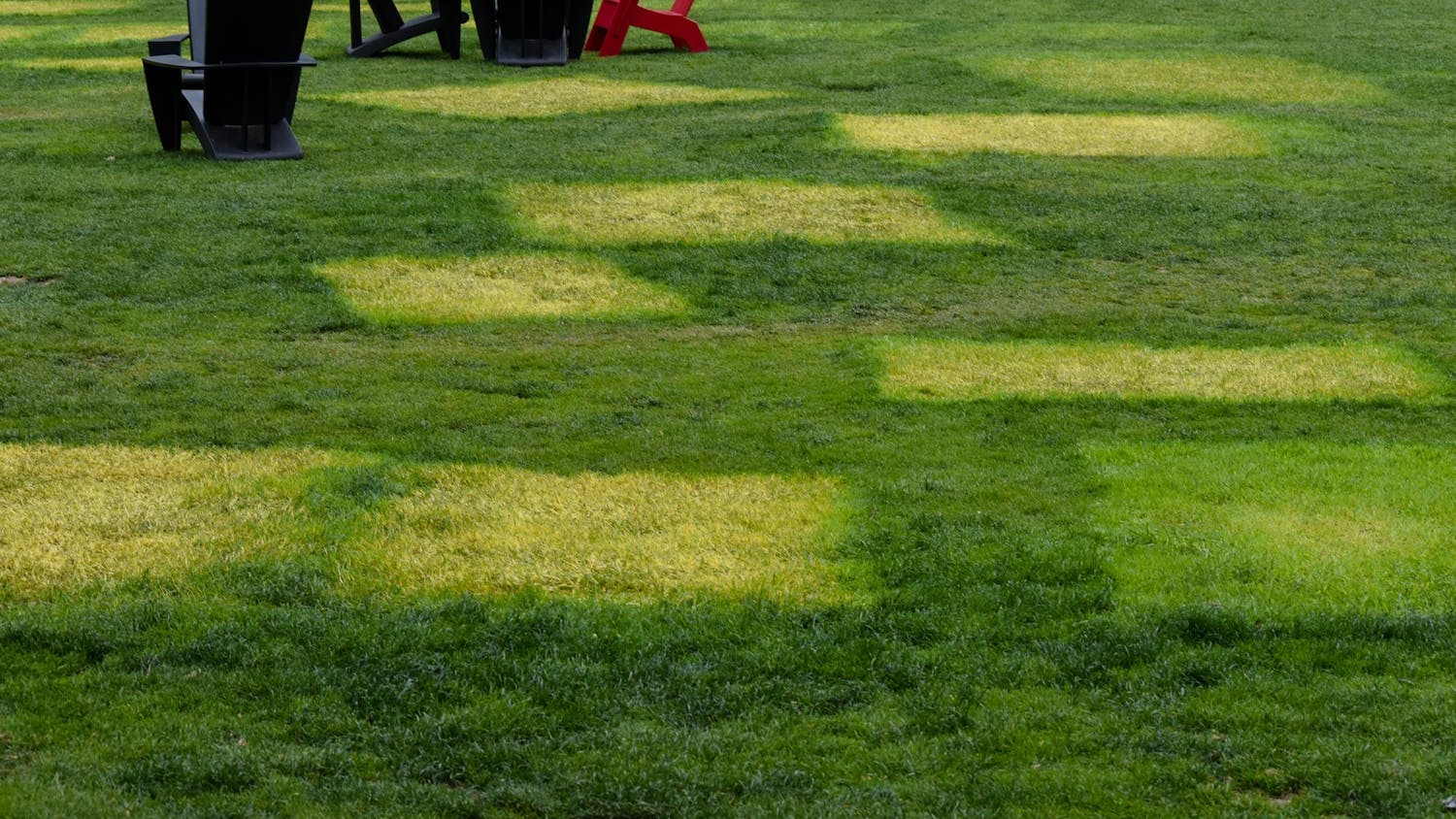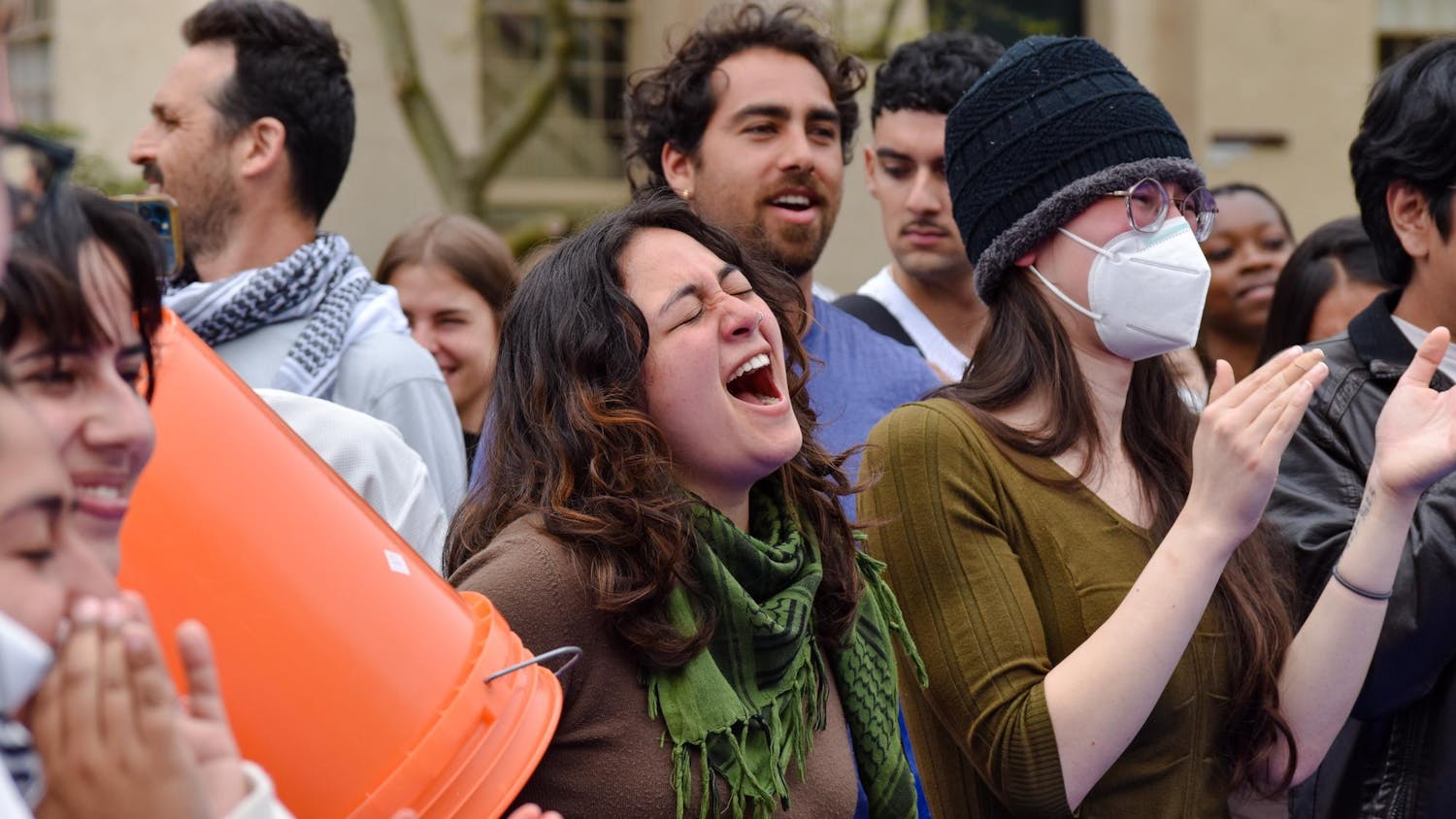Before classes resume on College Hill, the University intends to test all returning students for COVID-19. But what happens next?
On Tuesday, Russell Carey ’91, a member of the Health Fall Task Force and the executive vice president for planning and policy, spoke to The Herald about the on-going COVID-19 testing summer pilot for essential employees and how the lessons from the pilot will inform the University’s approach this fall when students return.
In an April Op-Ed published in the New York Times, President Christina Paxson P’19 called for “aggressive testing” on college campuses. “Testing is an absolute prerequisite,” Paxson wrote. “Regular testing is the only way to prevent the disease from spreading silently through dormitories and classrooms.”
The University's summer pilot performs routine testing "for all essential on-site faculty, staff and graduate students," according to the University's official plan for the 2020-21 academic year. As of mid-July, the University's summer testing pilot had received results for almost 1,200 tests, with fewer than five coming back positive.
The fall testing program, like the testing pilot, will be provided at no cost to the individual being tested, and will not require any form of insurance. But with the start of the fall semester looming ever closer, key details of Brown’s testing policy — result turnaround times and the number of testing sites on campus, for example — remain unanswered.
The following conversation has been edited for length and clarity.
How frequently will students be tested? President Paxson and others have stressed the importance of regular, routine testing — which tests individuals regardless of symptoms to monitor for the virus’s spread — but what does “regular” mean?
I don't have a precise frequency right now. I think we're in the final weeks of the pilot program, which has given us a lot of experience. We're working through the logistics and also the public health and scientific advice about the best approach for the fall. There will be an initial test at the start of the semester ... and it will be a regular basis after that. But it is something we're working very hard to finalize and we'll be communicating certainly before the beginning of the semester and really, as soon as we can.
How will the test collection be administered?
Tests for the summer testing pilot are supervised and self-administered nasal swabs. There's a clinical person who is there to instruct you carefully on what to do, (or who) would do it, if you for any particular reason, couldn't or preferred not to. That’s what I would currently anticipate for the fall, but testing is an area that’s developing rapidly.
Where will the test collection be administered?
On campus, but beyond that I’m unsure. The site that we are using for the summer pilot is 205 Meeting Street. That’s been great for the summer but it’s a much smaller population. So we'll have to be (using) a larger and maybe more than one site, and that is also in the mix of things that we're still working on.
What kinds of models has the University done, or what models created by other institutions, has the University considered as it determines the frequency of student testing?
I don't know if I have a specific answer. The Healthy Fall Task Force includes members who have a lot of expertise — the director of University Health Services (Associate Vice President for Campus Life and Executive Director of Health and Wellness Vanessa Britto), in particular — and we're in pretty much constant communication with a wide variety of peer institutions, all of whom are doing many of the same things and sharing information and knowledge. At the end of it, there's some judgement about balancing the amount of testing that’s appropriate for a population, and the details and logistics of getting that all done. It's not practical to test everybody every day, even though some public health experts might say that's the safest way for any kind of community to operate. But I don't really have a specific model to point to, but we are getting a lot of very informed and very sound advice and of course, also paying close attention to the guidance and information for both the Rhode Island Department of Health and the Centers for Disease Control and Prevention.
Who will be part of this asymptomatic, regular testing program?
The same principle is applied to the summer — everyone who is authorized to be on campus — will continue in the fall and obviously, expand to include a much larger population of undergraduates as the enrollment increases consistent with a plan that's been laid out by the President and the Provost for the fall term. Undergraduates in residence halls and undergraduates who are off-campus will be treated the same and will have an initial test, probably right around the end of August … and then ongoing testing throughout the semester. To be clear, if someone, particularly a student, has opted to enroll remotely and is not on campus, then they would not be included in a testing program. Any employee who continues to work remotely — a faculty member who opted to teach remotely, for example, or a staff member who can do their work remotely and will continue to do so in the fall — would not be included in the ongoing testing program.
If a student suspects that they have symptoms, what should they do?
The first thing to do is to immediately contact University Health Services. They will treat that student and assess what the most appropriate course of action is. If a test is warranted, that test will be processed through the Lifespan Lab, the laboratory that we use on a regular basis for students' healthcare. We expect same-day results on symptomatic tests. Symptomatic testing, unlike routine testing, would be managed through University Health Services for students and for faculty and staff by their primary care provider.
I’m also curious about whether some asymptomatic students may be routinely tested more than others. For example, students living in dorms versus those in off-campus accommodation. Is that something the University is considering?
That's definitely in the arena of frequency determinations that are still in the process of being made. I would expect the undergraduate student population to be treated pretty uniformly. Especially at the beginning of the semester, that would be my current expectation.
And does that change for graduate students?
Graduate students could be treated differently because of their levels of contact with each other and with undergraduates may vary. So that, that is a possibility. But that also is still really being assessed. No matter where those sort of differentiations come out, community members should expect regular and frequent testing. It is not going to be a rare occurrence. It's going to be a regular part of our routine, particularly in, I would say, the first half of the semester — being really cautious to ensure that we can detect the virus where it occurs and stay on top of developments and keep everybody healthy and safe.
Reflecting on how the summer pilot has gone so far, what has been the average wait time between administering the test and receiving the result?
Our wait time, like many testing processes across the U.S. over the last month, has been not good. We started the pilot on June 24, right as we were beginning to see a dramatic increase in cases, particularly in the southwestern part of the country, and the demand for testing really going into that early part of July has overwhelmed the system. We have been working very closely with Verily, which is the company that we're working with to help administer the overall program, to identify better and more timely lab partners. In the past week, we've been engaged with a new lab partner who have, for the most part, been returning results within 48 hours of having received them. And we're finalizing a relationship with another partner, the Broad Institute, who is currently delivering a 24-hour turnaround from the time it gets received. We're working really hard to get to that point. We feel better even in the past week with what we're seeing.
To clarify, is it that specific numbers about the summer pilot testing result turnaround time haven't been calculated, or is it that you're not disclosing them to the public?
I guess I was being more qualitative, but when I said we weren't happy with it, I mean we were easily seeing turnaround time of a week or more. But that was not just us; that was, that was labs nationwide. Right now, the lab we're working with is consistently turning them around in two days. And as I mentioned, we expect to be with a new lab soon that will be one day turnaround.
How will contact tracing work on campus?
If a student is showing symptoms, the medical professionals caring for that student may determine that contact tracing is appropriate — contact tracing doesn't require having a positive test. Contact tracing is done in coordination with and is consistent with guidance from the Rhode Island Department of Health. We have built up the capacity internally to support and manage contact tracing so that the Department of Health does not have to take on that responsibility exclusively for the Brown community… A number of colleagues … have gone through an online contact tracing course developed by Johns Hopkins.
What happens if someone doesn't show up for their scheduled test?
There will be a follow up.
By email?
The process is still being worked out. Email is probably pretty likely. The best thing I could say right now is that people will have to participate.
Is there a plan for if a student, staff or faculty member dies from COVID? Are there specific plans for those scenarios?
I don't know if this plan is exactly for that. I think that the overall plan of a healthy and safe campus, designed to mitigate this presence and spread of COVID and reduce the risk of bad outcomes, both in terms of people getting sick and of people dying. We can’t eliminate that risk completely. None of us can, in our daily lives. If somebody were to die, I mean, there would certainly be the things that we do typically — that does happen from time to time on campus, and there are communication protocols, supports and other things in place. So all those would be essentially the same. No doubt that would intensify people's levels of concern and anxiety. And I think we understand that. Our best response is to have a coordinated, comprehensive campus health and safety program that all community members are actively engaged in supporting.
Coming into this interview, the key questions on my mind — and on the minds of a lot of others in the University community — were: How frequent will the testing be? What will the turnaround time be? What labs will the testing be done at? And it seems like those answers are still unknown.
I would phrase it a little bit differently: They're all being worked on. We are absolutely going to communicate about the testing frequency. We’re going to communicate in August. I expect that we’ll be able to achieve the 24-hour turnaround time. But, to be transparent about it, that is something we are still working on.

ADVERTISEMENT




